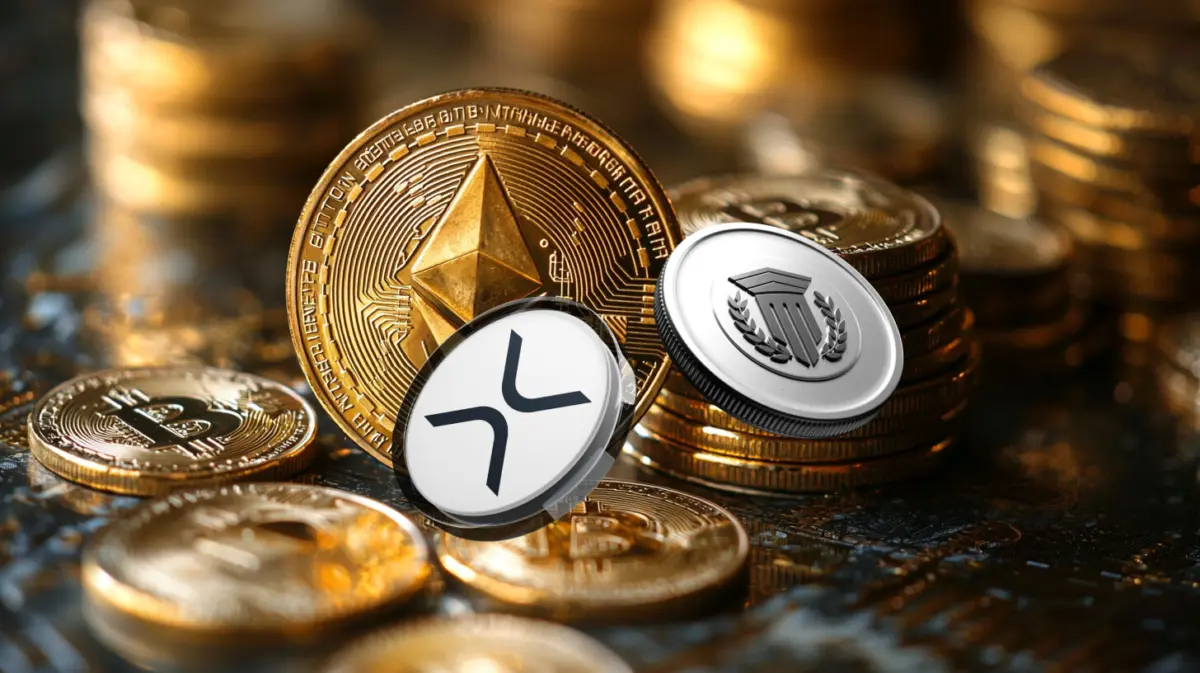Ripple’s Chief Technology Officer has sparked renewed debate in the crypto community after indirectly suggesting that XRP could evolve into a world reserve currency. The statement, made during a discussion on cross-border payments and digital asset integration, has reignited speculation about XRP’s potential to bridge traditional finance with blockchain-based monetary systems. As global economies explore alternatives to the dollar-centric financial model, Ripple’s technology — with its speed, scalability, and institutional partnerships — is increasingly being viewed as a viable foundation for a new era of digital liquidity and international settlements.
A Subtle Yet Powerful Assertion from Ripple’s Leadership
Ripple’s Chief Technology Officer, David Schwartz, has long been known for his visionary yet measured commentary on blockchain’s future role in global finance. His recent remarks, though indirect, have drawn considerable attention for what they imply — that XRP could one day serve as a reserve asset in international monetary systems.
Speaking about the limitations of current cross-border infrastructure, Schwartz emphasized the need for a neutral digital bridge currency that can facilitate seamless value exchange between fiat systems without political or regional bias. While he avoided explicitly naming XRP in that context, his references to the token’s liquidity, interoperability, and scalability were enough to spark widespread interpretation among analysts and investors.
Market observers note that Schwartz’s remarks align with Ripple’s broader strategy — one that seeks to position XRP Ledger (XRPL) as a foundational layer for global payments and institutional asset transfers.
Ripple’s Broader Vision for Global Financial Integration
Ripple’s long-term ambition has always extended beyond simple remittances. The company envisions a frictionless, borderless financial ecosystem, where XRP serves as a liquidity bridge connecting central banks, financial institutions, and digital asset platforms.
Through its On-Demand Liquidity (ODL) solution, Ripple has already demonstrated how XRP can replace costly pre-funded accounts, accelerating cross-border transactions while reducing capital inefficiencies. This capability — particularly when adopted by banks and fintech firms — positions XRP as a neutral settlement asset that can coexist with national currencies rather than compete against them.
Ripple’s expanding partnerships across Asia, the Middle East, and Latin America underscore its strategy to integrate digital assets into mainstream finance, aligning closely with global conversations around Central Bank Digital Currencies (CBDCs).
If CBDCs are to operate across borders efficiently, a neutral, interoperable medium of exchange like XRP could serve as the underlying connective tissue between sovereign digital currencies — a role reminiscent of how the U.S. dollar functions in trade today.
The Global Context: A Shift Away from Dollar Dominance
Schwartz’s comments also come at a time when geopolitical tensions and evolving monetary dynamics are pushing nations to diversify away from dollar dependency. Central banks are exploring digital alternatives to improve resilience and autonomy in the global payments system.
In this climate, blockchain networks capable of instantaneous, low-cost, and transparent settlements offer an appealing alternative. XRP, with its consensus mechanism and proven efficiency in handling institutional-grade transactions, is uniquely positioned to fill that gap.
Financial analysts argue that if Ripple succeeds in deepening relationships with central banks and regulators, XRP could emerge as a settlement layer for CBDCs, effectively functioning as a reserve bridge asset — a role that complements, rather than replaces, existing fiat structures.
Technological Foundation: Why XRP Stands Out
Beyond its market speculation, XRP’s underlying technology continues to attract institutional interest. The XRP Ledger (XRPL) offers transaction speeds of three to five seconds, scalability exceeding 1,500 transactions per second, and a negligible energy footprint — qualities that make it one of the most environmentally efficient blockchains available.
Moreover, its interoperability allows integration with both public and private financial systems, a key prerequisite for institutional adoption. Ripple’s ongoing development of sidechains, tokenization frameworks, and compliance tools further strengthens its position as a viable infrastructure for large-scale digital payments.
This technical robustness, coupled with Ripple’s active collaboration with financial institutions worldwide, lends credibility to the argument that XRP could function as a global settlement medium if adopted at scale.
Market Reaction and Investor Outlook
Following Schwartz’s remarks, XRP’s trading volume spiked, with investors interpreting the comments as a reaffirmation of Ripple’s long-term vision. While the market remains volatile and regulatory clarity around digital assets is still evolving, optimism persists among XRP proponents who believe the asset’s utility — not speculation — will ultimately define its value.
Institutional investors, in particular, are paying closer attention to assets like XRP that demonstrate real-world use cases beyond mere trading. As the industry matures, utility-driven adoption may well determine which digital currencies sustain relevance in global finance.
Conclusion: The Road Toward a New Monetary Era
Ripple’s CTO may have spoken indirectly, but the implications of his message are profound. The idea of XRP as a world reserve currency encapsulates a broader vision — one in which blockchain technology underpins a transparent, efficient, and politically neutral financial order.
Whether or not XRP attains reserve status, Ripple’s trajectory signals an irreversible shift in how money moves across borders. As central banks and global institutions experiment with digital assets and interoperable systems, XRP’s foundational principles — speed, scalability, and neutrality — could make it a cornerstone of tomorrow’s global financial infrastructure.
In an era defined by digital transformation and monetary realignment, Ripple’s strategy might be less about replacing the old order — and more about redefining it.
